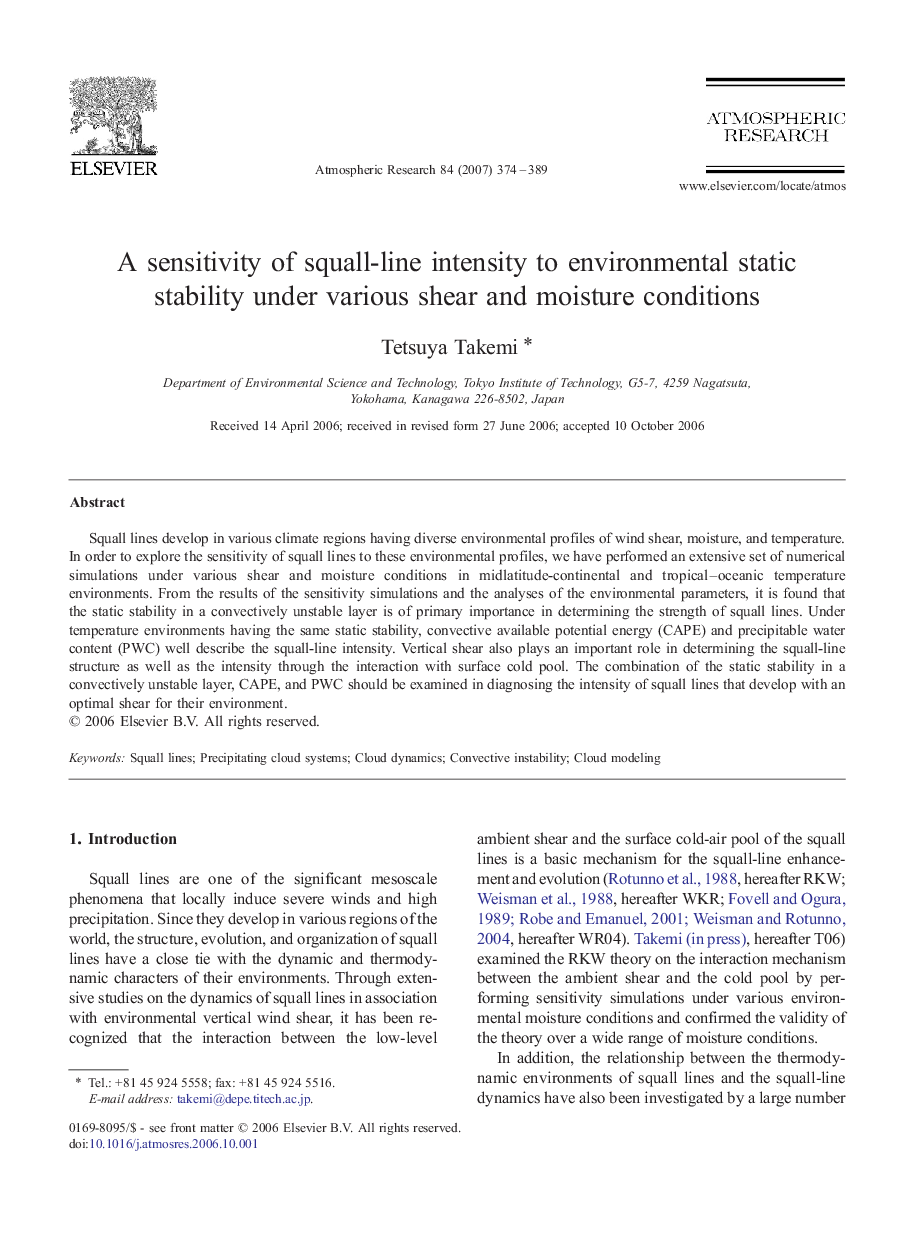| Article ID | Journal | Published Year | Pages | File Type |
|---|---|---|---|---|
| 4451308 | Atmospheric Research | 2007 | 16 Pages |
Squall lines develop in various climate regions having diverse environmental profiles of wind shear, moisture, and temperature. In order to explore the sensitivity of squall lines to these environmental profiles, we have performed an extensive set of numerical simulations under various shear and moisture conditions in midlatitude-continental and tropical–oceanic temperature environments. From the results of the sensitivity simulations and the analyses of the environmental parameters, it is found that the static stability in a convectively unstable layer is of primary importance in determining the strength of squall lines. Under temperature environments having the same static stability, convective available potential energy (CAPE) and precipitable water content (PWC) well describe the squall-line intensity. Vertical shear also plays an important role in determining the squall-line structure as well as the intensity through the interaction with surface cold pool. The combination of the static stability in a convectively unstable layer, CAPE, and PWC should be examined in diagnosing the intensity of squall lines that develop with an optimal shear for their environment.
